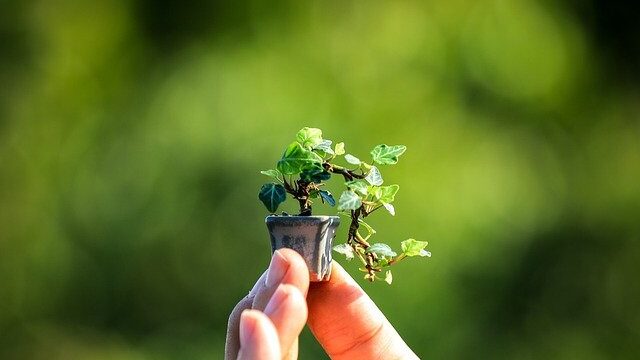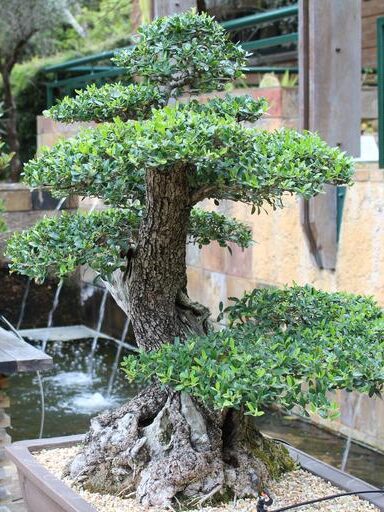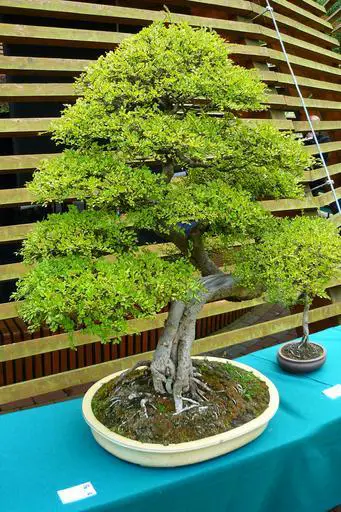Bonsai trees are treasured for their small size and extreme age, but have you ever wondered how big do bonsai trees get? In this post, we will discuss all the different bonsai sizes. From the tiniest bonsai trees to the 8 ft large ones.
How Big Do Bonsai Trees Get:
From a tiny three-inch starter tree to a large 80-inch bonsai, the size of your bonsai actually depends on you as a gardener.
Let’s look into different bonsai sizes. This will give you an idea about how big do bonsai trees get.
Different Bonsai Sizes:
Classifying bonsai trees according to their size helps the viewer determine the height and weight of the tree in its container. It also helps to gain an understanding of an aesthetic bonsai tree.
One of the most popular ways you can classify bonsai trees is by their sizes. This way you can divide all the bonsai into three groups i.e, small, medium, and large.
Miniature Bonsai:

Miniature bonsai are some of the smallest bonsai trees on this planet. They are very tiny and the size is between 1-3 inches.
There are 5 different variations of miniature bonsai form, they are called Keshitsubo, Shito, Mame, Shohin, and Komono.
Mame Bonsai Trees:
Mame means “bean” in Japanese because it looks like a bean pod. These adorable little trees are as small as 3” tall. They can be grown in a tiny pot, and as you can imagine they don’t need much space at home.
Keshitsubo Bonsai Trees:
Keshitsubo bonsai trees are some of the smallest varieties, in existence ranging from 1-3 inches. You can easily hold and admire the tiny tree with just two fingers, or place it into your pocket. With its beautiful bonsai design and craftsmanship, Keshitsubo bonsai also makes for a thoughtful gift.
Shito Bonsai Trees:
The Shito bonsai is the smallest common size bonsai. It can grow to be only two to four inches high. They are also known as fingertip bonsai.
Komono Bonsai:
The Komono, or “little tree” is a small bonsai tree, averaging 6 to 10 inches. They are the largest tree that you can move with one hand.
Shobin Bonsai:
Shohin trees are also known as palm bonsai because they fit in a palm (5-8 inches in height). Many people use Shohin and shito interchangeably, but there are some fundamental differences between these bonsai in the techniques used to create them.
Taking Care:
Miniature bonsai trees are a fun and creative way to decorate your home or office. But unlike their larger cousins, they need special care to grow and maintain their shape.
Because of their small stature, miniature bonsai trees are the perfect ornament for small apartments, hotel rooms, and dorms.
The ability to place them anywhere makes them a unique gift idea and conversation piece for anyone with a green thumb.
But remember, a miniature tree will look out of scale without the proper size flowers, fruits, leaves, and branches. So, as a bonsai designer, you have to be very selective about which plants you want to work with.
Medium Sized Bonsai:
Medium-sized bonsai trees are the sweet spot for most of us. They are not very tiny but at the same time small enough to keep inside a house.
Katade-Mochi:
One of the most popular bonsai to work with, the Katade-Mochi is charming in both style and character. It is also one of the easiest to care for. Ideally, they can grow between 10-18 inches.
Chumono/Chiu:
Chumono and Chiu can be used interchangeably. They are both two-handed bonsai trees, and they grow to be between sixteen and thirty-six inches tall.
Taking Care:
If you’re just starting with bonsai, getting a medium tree is the best way to start. These trees are easier to care for than miniature and large bonsai trees and require the same basic care.
Medium bonsai trees are ideal for indoor homes. Choose from a variety of sizes and familiar favorites. With proper care, you can enjoy your own miniature living tree for years to come!
It is a great choice for someone who wants to test their skills as a gardener. These trees will grow quickly enough that you’ll see results in just a few short months.
Large Sized Bonsai:

These bonsai are the largest among bonsai trees. You need at least 4 people to move them. Large-sized bonsai are divided into three categories:
Omono/Dai Bonsai:
Among the large-sized bonsai trees, Onomo or Dai are the smallest ones. They can reach a height of 4 ft. These are the bonsai that need four hands to carry.
Hachi-Uye:
A Hachi-Uye bonsai tree is so large that it requires six hands to move the tree and its pot. You can expect a Hachi-Uye to grow between 40 and 60 inches.
Imperial Bonsai:
Imperial bonsai trees are the largest individual bonsai trees in existence. They can grow up to 7 feet tall.
Taking Care:
Because of all the hard work, it takes to train a large bonsai tree, most people prefer to stick with the smaller species. They offer very little flexibility in terms of location.
Most of the large bonsai trees are grown outside and are rarely moved too much.
The best part of a large bonsai tree is that you can try many different design styles with them.
Conclusion:
A bonsai tree can be of many sizes. It can be as tiny as one inch and can also be as big as 8 ft in height. As a gardener, you can only decide how big your bonsai tree will get.
Keep that bonsai size classification in mind so that you know exactly what to aim for.
Thanks for reading.
